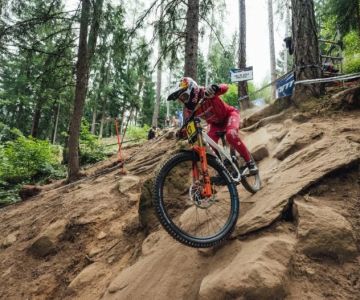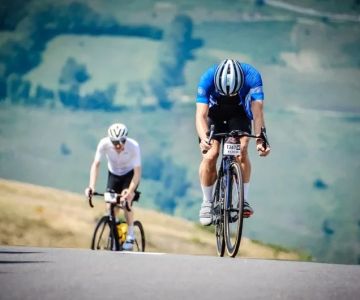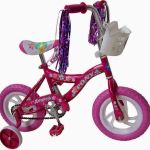
Why Core Strength Matters for Cyclists
- Understanding Core Strength
- How Core Strength Affects Cycling Performance
- Benefits of Core Exercises for Cyclists
- Case Studies and Real-Life Examples
- Recommendations for Building Core Strength
1. Understanding Core Strength
Core strength refers to the ability to engage and stabilize the muscles of the abdomen, lower back, and pelvis. For cyclists, a strong core is more than just aesthetics; it plays a pivotal role in optimizing cycling mechanics, ensuring that the energy transferred from your legs to the pedals is efficient.
The core provides stability and balance while cycling, allowing you to maintain a streamlined posture. When your core is weak, your body tends to compensate by relying more on your arms, shoulders, and legs. This can lead to poor form, discomfort, and even injury in the long run.
2. How Core Strength Affects Cycling Performance
A well-developed core enhances cycling efficiency by stabilizing the torso and maintaining proper posture throughout the ride. With a strong core, cyclists can avoid fatigue from poor posture and inefficient pedaling techniques. Additionally, core strength plays a role in the following areas:
- Pedaling Efficiency: A strong core helps cyclists maintain proper pedal stroke mechanics, which allows for smoother and more effective pedaling.
- Posture and Alignment: Core strength promotes better posture on the bike, which reduces strain on the lower back and helps maintain an aerodynamic position.
- Injury Prevention: A strong core can help prevent common cycling injuries, such as lower back pain and hip flexor strains, by supporting proper body alignment.
By improving your core strength, you’re not only enhancing your endurance but also reducing the likelihood of injury during long rides or intense training sessions. This makes core exercises a must for cyclists of all levels.
3. Benefits of Core Exercises for Cyclists
Incorporating core exercises into your fitness routine offers several benefits that directly translate into better cycling performance. Here’s a breakdown of the key advantages:
- Improved Cycling Speed: With a stable core, your body becomes more efficient in transferring power from the legs to the pedals, boosting your speed and endurance on the bike.
- Better Control and Balance: A strong core provides more control over the bike, especially when navigating difficult terrains or during fast descents.
- Reduced Muscle Fatigue: By engaging the core muscles, cyclists can distribute physical demands more evenly across the body, reducing muscle fatigue during rides.
Whether you are a competitive cyclist or someone who enjoys casual weekend rides, strengthening your core will help you ride longer and more comfortably while enhancing overall performance.
4. Case Studies and Real-Life Examples
Real-life examples show the profound impact that core strength has on cycling performance. Take the case of Chris Froome, a professional cyclist and multiple-time Tour de France winner, whose rigorous core training routine plays a significant part in his overall success. Chris frequently integrates stability exercises to maintain his strength and endurance during races.
Another example comes from Sarah Stevens, an amateur cyclist who struggled with lower back pain. After incorporating targeted core strengthening exercises into her routine, Sarah noticed a significant improvement in both her comfort on the bike and her performance during long rides. Her ability to stay in a streamlined position for extended periods allowed her to ride with more power and less fatigue.
5. Recommendations for Building Core Strength
To build a stronger core and improve your cycling performance, consider including the following exercises in your routine:
- Planks: One of the most effective core exercises, planks engage the entire core, improving stability and endurance.
- Russian Twists: This exercise helps with rotational strength, which is useful for cyclists when shifting positions on the bike.
- Leg Raises: Leg raises target the lower abs and hip flexors, enhancing your ability to maintain posture during cycling.
- Bridges: This exercise helps strengthen the lower back and glutes, which are essential for powerful pedal strokes.
Remember, consistency is key. Start by incorporating core exercises into your weekly routine and gradually increase the intensity. Combining core workouts with cycling-specific strength training can help maximize the benefits and improve your overall performance.
For more tips and resources on cycling training, check out Cycling Guider, where you can find the best products, services, and training tips tailored to your cycling needs.







 Billet BMX5.0 (2 reviews)
Billet BMX5.0 (2 reviews) Far East Children Bicycle Factory1.0 (1 reviews)
Far East Children Bicycle Factory1.0 (1 reviews) Archer Motorsports, Inc.4.0 (8 reviews)
Archer Motorsports, Inc.4.0 (8 reviews) YEP Bike Works4.0 (55 reviews)
YEP Bike Works4.0 (55 reviews) Gorham Bike & Ski4.0 (498 reviews)
Gorham Bike & Ski4.0 (498 reviews) Alchemy Bikes4.0 (37 reviews)
Alchemy Bikes4.0 (37 reviews) How to Teach Kids to Ride a Bike: A Step-by-Step Guide for Parents
How to Teach Kids to Ride a Bike: A Step-by-Step Guide for Parents Tips for Riding on Busy City Streets: Smart Strategies for Urban Cyclists
Tips for Riding on Busy City Streets: Smart Strategies for Urban Cyclists Best US National Parks for Mountain Biking: Ride Epic Trails Across America
Best US National Parks for Mountain Biking: Ride Epic Trails Across America Best Aero Helmets for Time Trials and Racing
Best Aero Helmets for Time Trials and Racing How to Clean and Lubricate Your Bike Chain Like a Pro
How to Clean and Lubricate Your Bike Chain Like a Pro 10 Must-Have Items for Long-Distance Cycling Trips
10 Must-Have Items for Long-Distance Cycling Trips